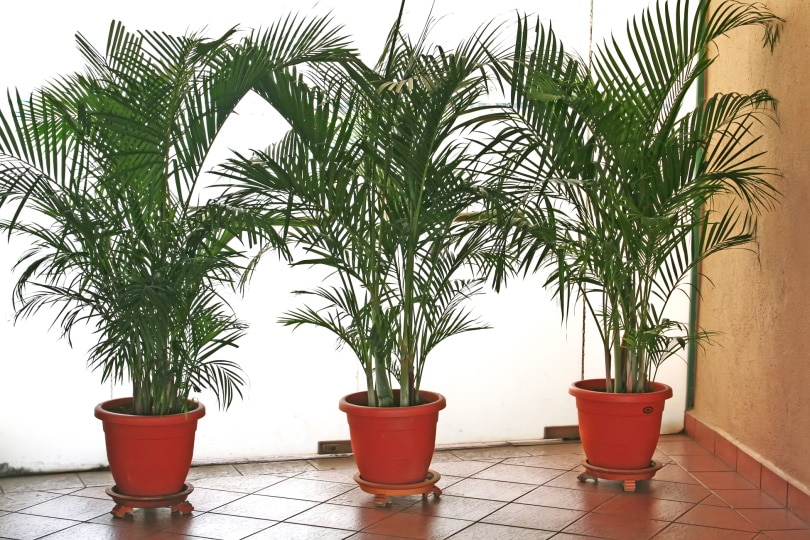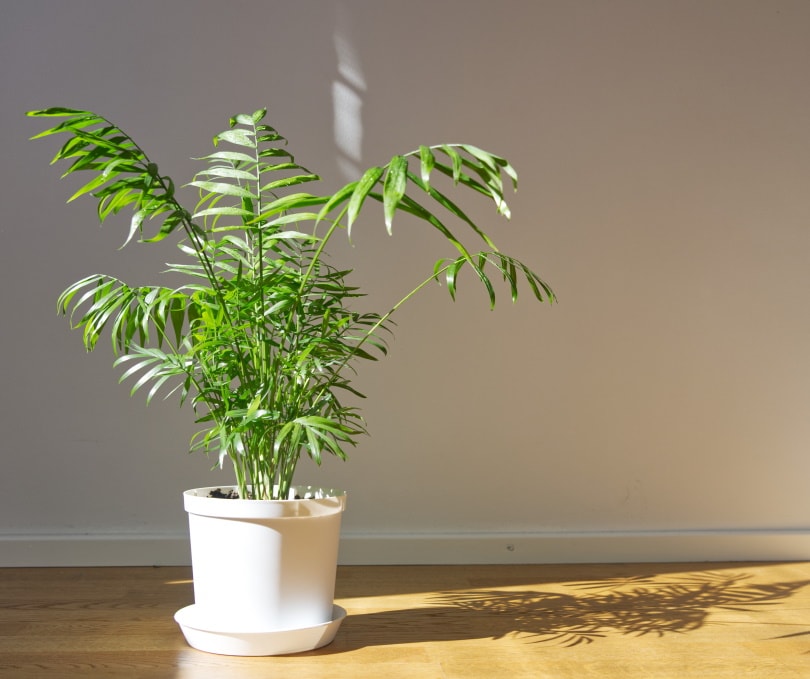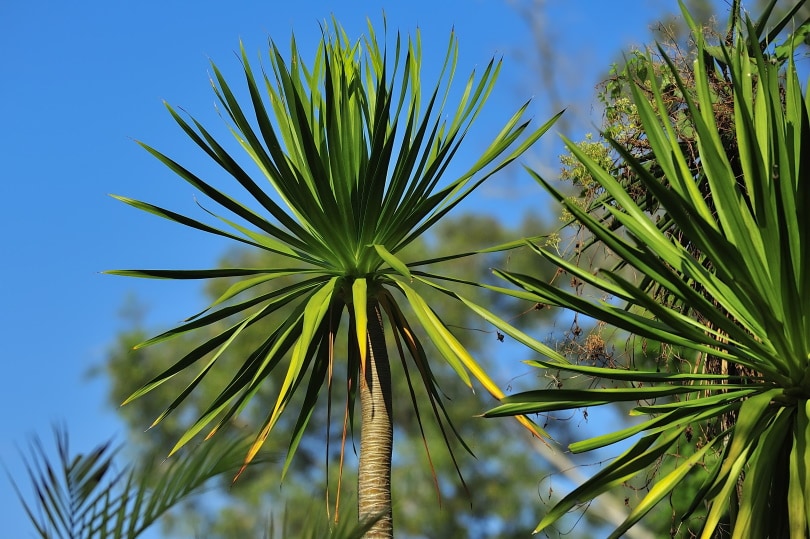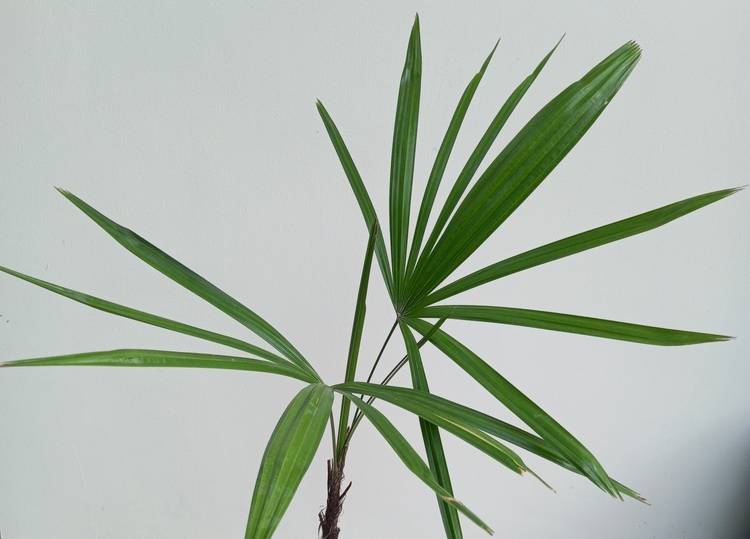17 Different Types of Indoor Palm Trees (With Pictures)
-

- Last updated:

The beauty of palm trees is undeniable, with their large fan leaves and slender shape. They represent tropical climates with their association with paradise. There’s a lot of diversity within the Arecaceae family, with 2,600 species. Only 130 palms venture north of these areas. Many species get quite tall at heights topping 60 feet or more.
Some of these species can also do well in gardens in the appropriate hardiness zone. Even if you live in a temperate climate, you might be able to take the plants inside during the colder months of the year. However, it’s essential to provide the palm with the conditions it prefers to ensure that it survives. Of course, availability varies with these indoor plants, but you have plenty of choices. This article goes over 17 different types of palm trees that will do well indoors.
The 17 Different Types of Indoor Palm Trees
1. Parlor Palm (Chamaedorea elegans)

The Parlor Palm is appropriately named and a fitting start to our list of indoor plants. It’s not a large species, so you can put it in a smaller room with it making a noticeable impact. Unlike many trees in this family, it doesn’t form a clump. Your houseplant will resemble a bamboo forest more than a palm on the beach.
2. Cascade Palm (Chamaedorea cataractarum)
It’s helpful to keep in mind the Central American habitat of the Cascade or Cat Palm to provide the right conditions for this tropical plant. It is a wetland species that prefers higher moisture levels than many others in its family. It can reach a decent height of 6 feet, making it suitable for most homes. This lush palm makes an attractive focal point.
3. Lady Palm (Rhapis species)
The Lady Palm is another plant with a fitting name that describes its fronds to a tee. It’s a gorgeous tree that will bring a lot to a room. It’s another species that toes that line between moist and waterlogged soils. This palm also has variegated leaves that add to its beauty. Like the Parlor Palm, this one also prefers indirect sunlight.
4. Kentia Palm (Howea forsteriana)
The Kentia Palm makes an excellent choice as a beginner plant because it is relatively tolerant of less-than-ideal conditions. It also has a beautiful profile that is quite eye-catching. It is a slow-growing plant that will only get to about 8 feet tall in a container. However, like many palms, it reaches much higher heights when grown outdoors.
5. Canary Island Date Palm (Phoenix canariensis)

The Canary Island Date Palm is a striking plant with a full canopy of long fronds. As the name suggests, it does produce fruit. It’s another slow-growing variety that does well with tropical conditions of high humidity and warm temperatures like its native home. It is a large tree when grown outdoors. You can expect it to reach a height of 10 feet when kept indoors.
6. Sentry Palm (Howea belmoreana)
If you’re looking for a plant that makes a statement, look no further than the Sentry Palm. This tree has a commanding presence, with its full canopy of long and broad fronds. It is a species that is very much in touch with its tropical side. That means a warm room and misting during the drier times of the year for it to thrive indoors.
7. Yucca Palm (Yucca elephantipes)

The Yucca Palm has a much different profile than the other plants we’ve discussed so far. It resembles a corn plant (Dracaena fragrans) more than a palm tree. This species comes from Mexico, with a range that dips down into Central America. While it can handle dry conditions, it prefers it on the warm side.
8. Majesty Palm (Ravenea rivularis)
The Majesty or Majestic Palm is another island-dwelling plant. This species hails from Madagascar, where it can get to be a very tall tree. It’s best suited to an area where you can eventually transplant it outdoors. While it’s not fast-growing, it will likely outgrow its pot eventually. It does best in the warm, humid conditions of its native land.
9. Bamboo Palm (Chamaedorea erumpens)

The Bamboo Palm is an excellent choice if you have limited space. Unlike other species we’ve discussed, this one doesn’t have the wide canopy of the others, with a spread of 3–5 feet. It is fairly tolerant of dry and cool conditions. The plant is native to Central and South America. If you’re lucky, this palm may produce flowers a few times a year.
10. European Fan Palm (Chamaerops humilis)
The name of the European Fan Palm says it all. Its leaves form wide hand-like fronds. As you may expect, it has a large spread that will take up a lot of room. It’s another slow-growing plant that is tolerant of a variety of conditions. It will fare best at average room temperatures and humidity with indirect sunlight. We recommend using a fast-draining potting soil mixture with this species.
11. Pygmy Date Palm (Phoenix robelinii)
The name of the Pygmy Date Palm is fitting, seeing as it only reaches heights of 5 feet when mature. This plant comes from China. It is tolerant of both lower temperatures and drier conditions. It will thrive if it can get some morning sun every day. It’s another species that makes a good choice for someone new to growing palm trees.
12. Burmese Fishtail Palm (Caryota mitis)
The Burmese Fishtail Palm gets its name from its odd-shaped leaves. That makes it unusual for this type of tree. It does best with warm, humid conditions and indirect sunlight like its native land. Otherwise, it’s not a fussy plant. It can get up to 10 feet fall with a 6-foot spread. While many species don’t have issues with pests, spider mites can be a problem for this palm.
13. Chinese Fan Palm (Livistona chinensis)
The Chinese Fan or Fountain Palm is a gorgeous plant with emerald-green foliage. The synonym for this species describes the growth pattern of its fronds that seem to spill over the sides of its upright trunk. Like others of its type, it is slow growing but can get up to 15 feet tall when mature. Like the European variety, it also has a large spread.
14. Areca Palm (Dypsis lutescens)
The Areca Palm is a delicate-looking plant that will bring elegance to a room. That makes it quite popular. You may see this species called the Bamboo Palm because of the growth pattern of its stems. This tree prefers a warm room with plenty of morning sun. It does best in humid conditions. Like the Burmese Fishtail Palm, it is also susceptible to spider mites.
15. Grass-Leafed Parlor Palm (Chamaedorea seifrizii)
The Grass-Leafed Parlor Palm is an excellent choice if you have limited space. While it can get tall, it has a slender profile with a smaller spread. The stems form a dense cluster that gives it its name. This palm likes bright, sunny conditions. However, it will likely outgrow its container if you do. It will tolerate indirect light to keep its size manageable.
16. Thailand Lady Palm (Rhapis subtilis)

The Thailand Lady Palm is another delicate species in more ways than one. It’s a smaller plant that will grow up to 6 feet tall. However, it is a fussy variety that must have just the right humid conditions to thrive. Otherwise, spider mites might become a problem. Its fronds resemble fan palms with a more compact spread than those varieties.
17. Ruffled Fan Palm (Licuala grandis)
The Ruffled Fan Palm is so striking that you may almost think it’s a fake plant. The fronds are close together, unlike the spreading ones of a fan palm. They also form dense clusters that will spiral upward, giving them a smaller, compact spread. While it likes humid conditions, it’s fairly hardy and tolerant. It’s another species that won’t take up a lot of room with its 6-foot height.
- Related Read: Palm Tree vs Palmetto Tree: What’s the Difference?
Palm Wannabees
Some palms have it in their names but are not part of the Arecaceae family of true species of this group. Some that you may see include:
- Sago Palm (Cycas revoluta)
- Ponytail Palm (Beaucarnea recurvata)
- Panama Hat Palm (Carludovica palmata)
- Palm Grass (Setaria palmifolia)
Tips for Growing Palms
Moisture is a big deal when keeping palms indoors. It’s essential to remember that these are tropical plants that require these kinds of conditions. However, it’s all about balance. You don’t want the soil to get too dry, nor do you want the palm in standing water. We suggest sticking your finger into the soil and watering your palm if it feels dry.
Humidity is equally as vital. You can mist it with a water bottle to compensate for the dryness of your home. Running a humidifier is another option that you may consider, particularly if you live in a northern climate. Your dog or cat will appreciate not getting shocked anytime you try to pet it. We also recommend not putting the plant near heat registers.
The average room temperature is ideal for most palms. Sunlight streaming in from a southwest or southeast-facing window will ensure they get enough light that isn’t too strong to burn the palm’s leaves. The Parlor Palm is the one exception since it does best in low-light conditions. If you provide the proper care, you’ll get many years of enjoyment from these plants.
Final Thoughts
Keep in mind that many indoor palm trees have multiple synonyms. You may even see the same one with two different species. The scientific name is your best bet for getting the plant that you want. Luckily, they are relatively easy to cultivate if the conditions are right. You can enjoy the beauty and the little bit of paradise they’ll bring to your home.
- See also: 10 Different Types of Roses
Featured Image Credit: Kheng Guan Toh, Shutterstock
Contents

